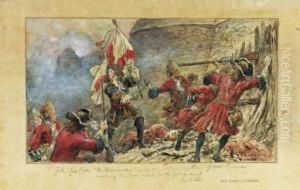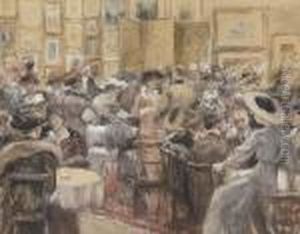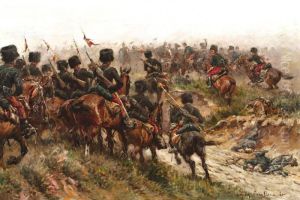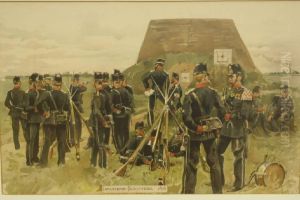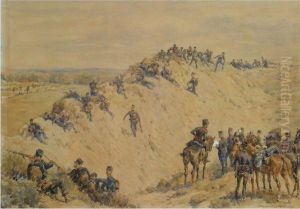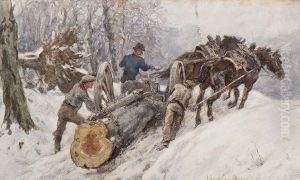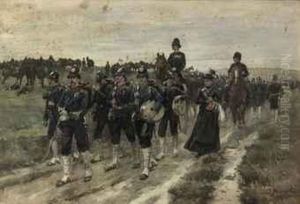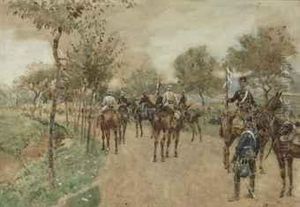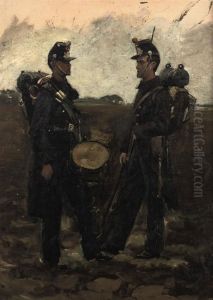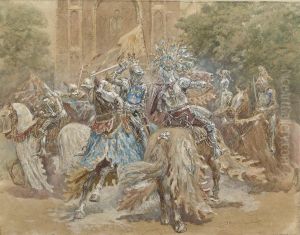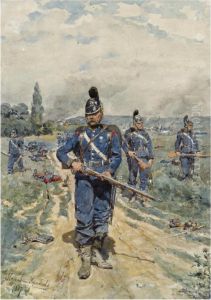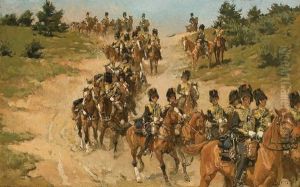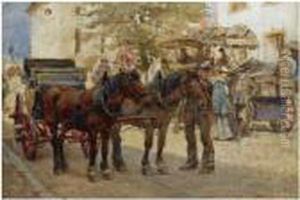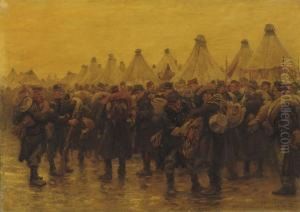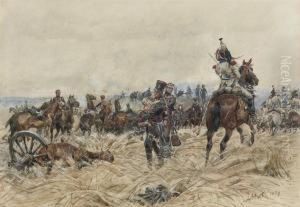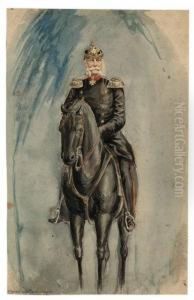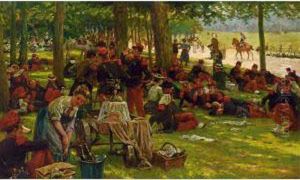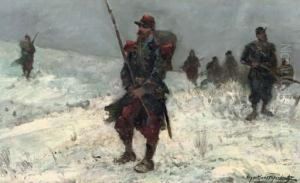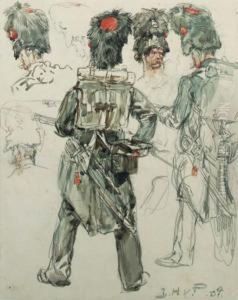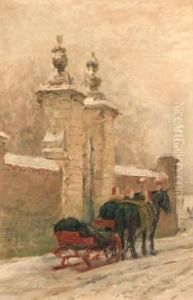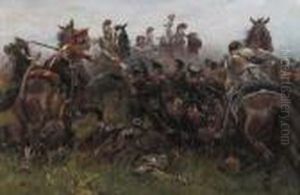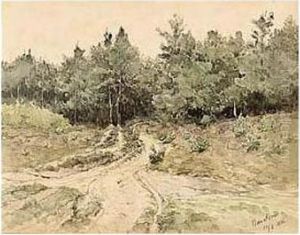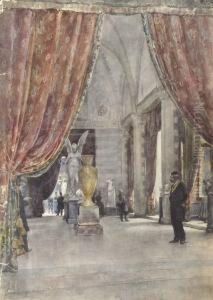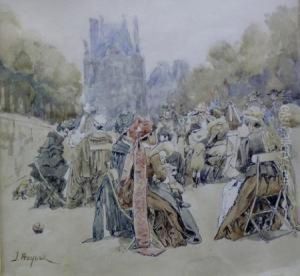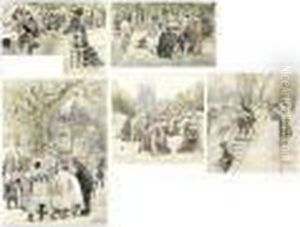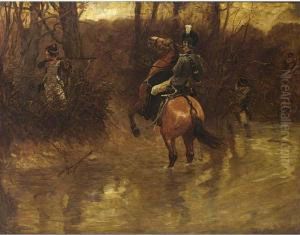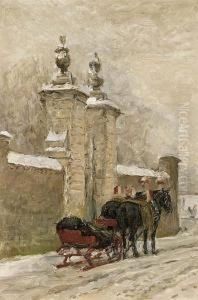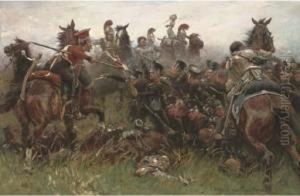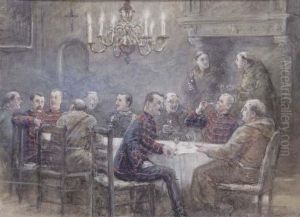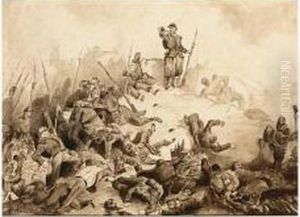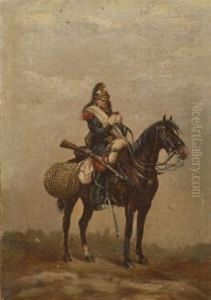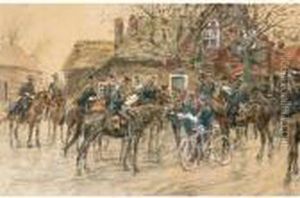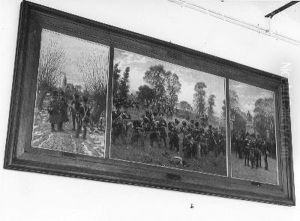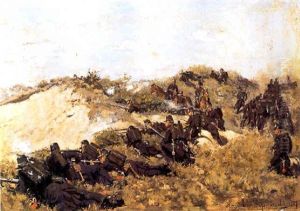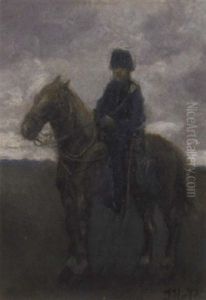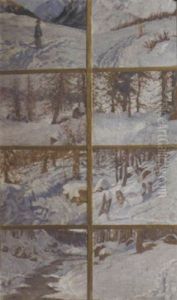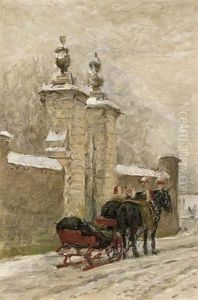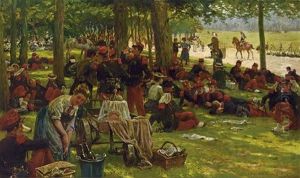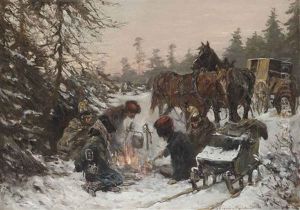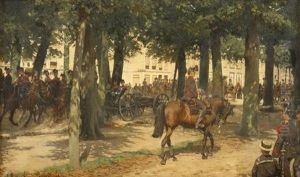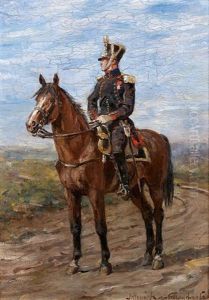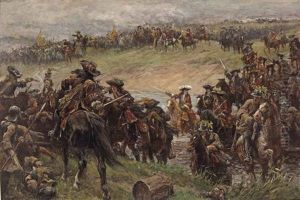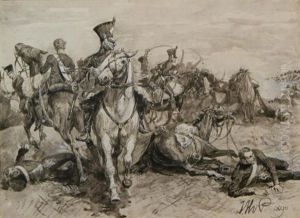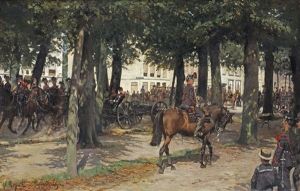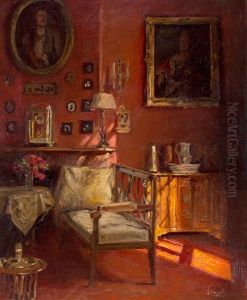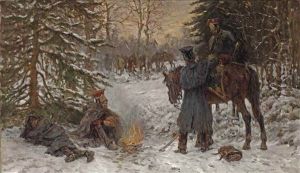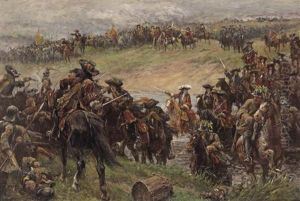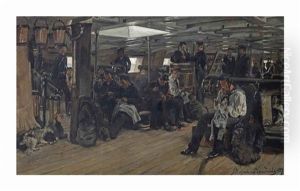Jan Hoynck Van Papendrecht Paintings
Jan Hoynck van Papendrecht was a Dutch painter, born on December 4, 1858, in Rotterdam, Netherlands. He is particularly known for his detailed and authentic military paintings, which accurately depict the uniforms and military scenes of his time. His interest in military subjects was likely influenced by the period he lived in, which saw significant military activity and developments in Europe.
Hoynck van Papendrecht received his early artistic training at the Rotterdam Academy of Fine Arts and later continued his education at the Royal Academy of Art in The Hague. He was a contemporary of other Dutch artists who also focused on military and historical subjects, but Hoynck van Papendrecht distinguished himself with his meticulous approach to the portrayal of military attire and the daily lives of soldiers.
Throughout his career, he worked on various commissions for the Dutch government and military institutions. These commissions included creating illustrations for military books, painting portraits of high-ranking officers, and depicting significant battles and events. His works are noted for their historical accuracy and attention to detail, qualities that made them valuable not only as art but also as historical documents.
Aside from military paintings, Hoynck van Papendrecht also produced a number of watercolors, sketches, and portraits. His style is characterized by a realistic representation of his subjects, with a particular focus on lighting and color to enhance the narrative of the scenes he depicted.
Jan Hoynck van Papendrecht's legacy as an artist is marked by his contribution to the genre of military art in the Netherlands. His paintings remain on display in various Dutch museums and continue to be appreciated by both art enthusiasts and historians for their faithful depiction of military history.
He passed away on May 24, 1933, in The Hague, leaving behind a body of work that provides a visual record of Dutch military history and uniforms. Hoynck van Papendrecht's dedication to his subject matter and his artistic skill ensure that his work continues to be studied and admired.
